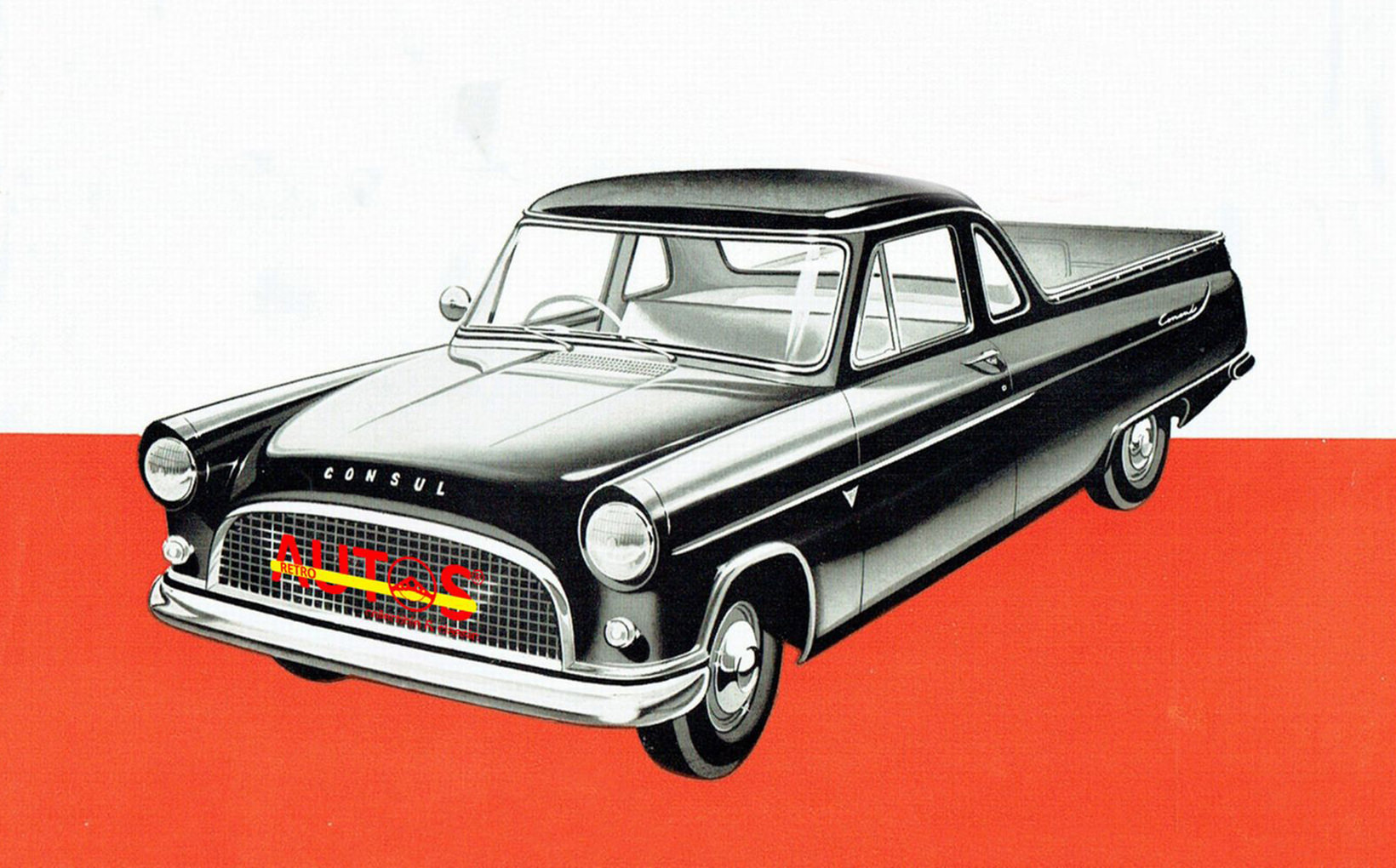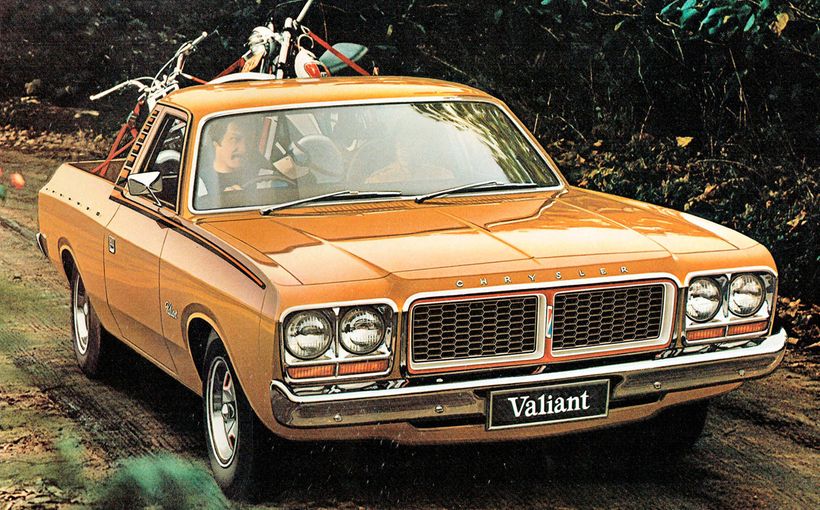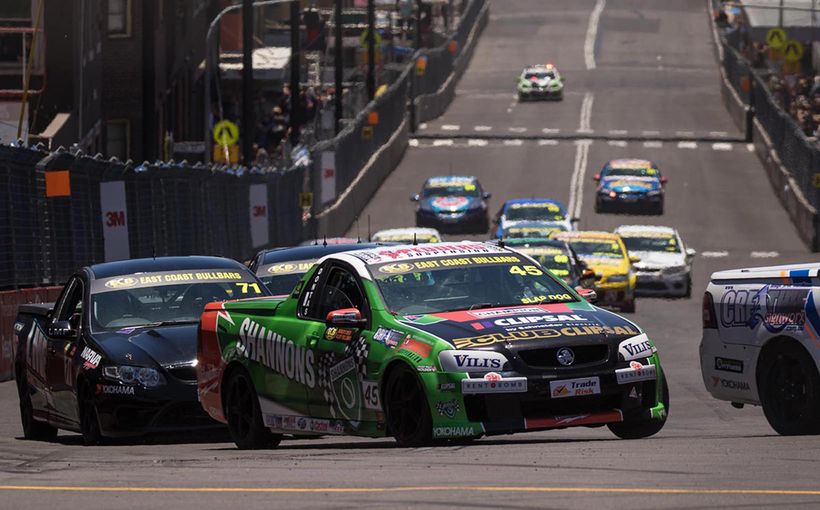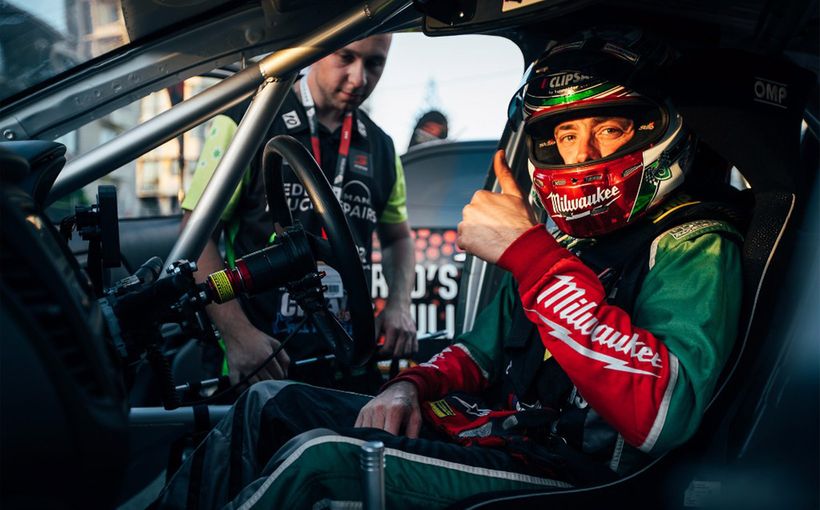Unique Aussie designed UK Utes: Celebrating Local Ingenuity

The passenger car based, steel roofed utility coupe—the ute— is an Australian automotive innovation. First shaped by Ford designer Lew Bandt, and released in July 1934, it has been one of the most potent symbols of our car industry’s can-do inventiveness, and has been copied worldwide.




Although Ford invented the ute, it was Holden’s “right sized”, six cylinder, rugged and basic utes that dominated in the 1950s, reaching beyond a 50% market share in 1956. Those dynamics shifted when the 1961 Falcon and 1965 Valiant based utes arrived. With Chrysler’s advertisements promising more power and more comfort, the signs were there for all to see that utes were no longer humble haulers. And when V8s became an option in the late 1960s, the era of the high performance ute had arrived. What was once an innovation was now an icon, deeply embedded in our popular culture.



But, there is much more to this story of Australia’s automotive ingenuity than the utes of Ford, Holden and Chrysler. Almost forgotten are the all-Australian utes based on British passenger cars, such as Austin, Vauxhall, Prefect, Vanguard and Singer. These vehicles are equally unique, because they were specifically designed and built in Australia, for Australia. Indeed, many were designed and built with little or no input, or support, from the UK parent company, who saw little value in developing an innovative niche model for far away Australia.


(Images: Hindhaugh Collection)
What makes these British utes especially unique, is that many were built by state-based independent vehicle assemblers. It means that the same model utes can have different styling depending on who built them and where.
Despite their uniqueness, very little attention has been given to these Australian designed UK utes. Consequently, I asked Nairn Hindhaugh to co-author this story.
Nairn is an automotive historian and champion of British brands that were made in Australia, especially those from the British Motor Corporation (BMC). During his long career in the automotive world Nairn has worked in the PR department at BMC Australia (BMCA), at car dealerships in the UK and established one of Australia’s first online automotive book and brochure selling businesses. He writes for classic car club publications and owns a 1964 Austin Freeway and a 1962 Morris Elite.

(Image: Hindhaugh Collection)
Who built what?
The best way to categorise the All-Aussie UK utes is to split them into two groups, based on who built them and where.
Austin, Morris (pre and immediately post WWII) and Singer utes were assembled by state-based body builders, such as Ruskin Motor Body Works, Martin & King and James Flood in Melbourne, Larke Hoskins (Pressed Metal Corporation) and Smith & Waddington in Sydney, U.K. & Dominion Motors (Hope Body Works) in Brisbane and Lawton in Adelaide. The usual process was that the chassis and front sheet metal of the passenger car were shipped to the relevant builder. They would then complete the ute, integrating the tray with the cabin in the best way they could.
Triumph-Standard, Ford and GMH (Vauxhall) used their own factory assembly lines. Ford also used Martin& King for its Popular ute.

Australia’s first All-new Post War Ute
The most prolific users of independent builders were Austin and Nuffield (makers of Morris, Riley, MG and Wolseley). In the immediate post war years they continued selling pre-war ute models, which had been designed locally. These rivals were forced to share body assemblers in some states.

(Image: Hindhaugh Collection)
The prize for first Australia’s first post war all-new ute goes to the Austin A40. It appeared in 1948, at a time when everyone else was selling re-freshed prewar vehicles. Based on the A40 passenger car, its full chassis made it easy for the various builders to add the utility body.
Back in 1948-49, before the 48-215 Holden became popular, the A40 Austin was Australia’s bestselling car. Sales of the ute were equally as strong, especially in regional and rural areas. In those pre-48-215 days, the A40 was not as big nor as expensive as the Chevrolet and Ford Mainline utes, and it was larger than Ford’s Popular ute and the Morris Minor utes. Its size and price suited many farmers, small business owners and tradies. In fact, the A40 sold so well that Austin had to import fully built-up A40 utes from Britain to supplement local production.

(Image: Hindhaugh Collection)
Keen eyed BMC enthusiasts can identify A40 utes by body builder, however, many utes that survive today are an amalgamation of parts and body panels from different builders because, over many years, successive owners wanted to keep them on the road.


Some notable differences include the Larke Hoskins versions. They were progressively re-styled and by the mid-1950s they featured a large Perspex rear window and smooth flowing rear mudguards. The Ruskin built utes came with a smaller rear window and detachable rear wheel covers. Hope made a design feature of the rear mudguards while Lawton took a simpler approach with prominent 1940s style guards. You can always pick an import, because it has a separate tub tray.


(Images: Hindhaugh Collection)


(Image: Hindhaugh Collection)
A very basic A40 ute called the Rouseabout was built by Hope. Cheap as can be, its outer panels were Masonite and it had just the bare minimum of comforts. Only 87 were ever made. None are believed to have survived.


(Image: Hindhaugh Collection)
Meantime, Nuffield moved to importing UK designed utes, the Minor and Oxford. Like the imported Austin A40 Ute, they had a separate tray. In 1952 Austin and Nuffield merged to create BMC and began consolidating the state-based assembly operations, and imported panel assemblies, into the newly constructed Nuffield factory at Zetland, Sydney.

(Image: Hindhaugh Collection)
BMC Australia’s (BMCA) first post-merger local ute was the Austin A50/55, released in 1954. For a while they also built a Morris version. Not surprisingly, BMC in the UK ignored the Australian ute and designed their own A50/55 ute. Launched in 1957 it had a different roof and door. It remained in production until 1973! The local ute was discontinued when the “Farina” styled models were announced in 1959.


(Images: Hindhaugh Collection)
In 1960, the BMCA styling team sketched ideas for Morris Major and “Farina” utes. These never went beyond the design studio. In 1963 an Austin Freeway station wagon was cut up and converted into a prototype ute. Nothing ever came of the proposal, and it was confined to transport duties within BMCA’s Zetland factory. It was discovered years later under a tree, far too rusted to be restored.
Another idea was called the “Wombat”. It was based on the Morris 1100, with an extended wheelbase. Around 12 were built. One is reported to still be in the Northern Territory.


(Images: Hindhaugh Collection)

(Image: Hindhaugh Collection)
Perhaps the most innovative ute ever sold on the Australian market was the front-wheel-drive Austin 1800. With no driveshaft or conventional suspension systems getting in the way, BMCA’s design team of Romand Rodbergh and David Bentley created a low and wide floor area with enough distance between the wheel arches for object measuring 1.8 x 1.2 meters.
Introduced in mid-1968 (the Mark II version appeared in March 1969) just over 2000 were made. A six-cylinder Tasman Ute was considered. Two prototypes were built, however the project was discontinued because of the development of the P76 sedan and Force 7 coupe.


(Images: Hindhaugh Collection)

(Image: Hindhaugh Collection)
BMCA/Leyland’s last all-Aussie ute was based on a Mini Moke. It was released in 1975 and is a wonderful example of Aussie ingenuity making the most out of very little. It harked back to the Rouseabout idea.


(Images: Hindhaugh Collection)
Singer
Singer importers sold an Australian-only utility based on the Nine roadster. The tray was built by Floods. The Nine was replaced in 1951 by the SM 1500 sedan based half tonner. It was discontinued in 1953. Singer became part of Rootes in December 1955.

(Image: Hindhaugh Collection)
Ford
The Ford Popular ute, with its aging pre-war styling, was constructed by Martin & King until the model was discontinued in 1955. A Zephyr Mark I prototype ute was built in 1952, but the projected price was not competitive against the newly released 48-215 Holden ute.

(Image: Hindhaugh Collection)
In 1957 Ford announced the six-cylinder Zephyr and four-cylinder Consul utes as competitors to the FE Holden. These were built on the production line at Geelong. The continuing problem for Ford was that its duo could not be priced low enough to compete with Holden. They were replaced by the Falcon ute in 1961.


(Images: Hindhaugh Collection)
Standard
The tough Phase I and II Vanguard utes were built at Standard’s own factory in Melbourne (just down the street from GMH). The local utes were different to their British equivalent in that the tray was longer. Two tone paint and a bit of chrome bling was also added to keep it fresh against increased competition.

(Image: Hindhaugh Collection)
The completely redesigned Phase III Vanguard sedan was released in 1955 and all-Australian ute model appeared in 1956. When Standard-Triumph was bought by Leyland in 1958, AMI was created. They continued to build the Vanguard ute until 1964. And then there was the Triumph Mayflower. Much to the horror of the British management, 150 utes were built from components of the slow selling sedan. It did not attract many sales.


(Images: Hindhaugh Collection and Shannons)
Vauxhall

When the 1952 E-Series Velox (six cylinder) and Wyvern (four cylinder) were in development at Vauxhall the project included a ute, specifically for Australia. It featured a wrapped rear window. But, by the time it appeared on Australian roads, GM-H had changed the design so that it shared part of the roof, rear window and tail gate with the 48-215/FJ Holden ute.
Unlike the Holden ute, the Vauxhall was mounted on a chassis, which it shared with the unique-to-Australia Vagabond convertible. The Vauxhall utes stood no chance against their Holden siblings, which were cheaper and lighter. Plus, they restricted Holden’s production capacity. They were discontinued in 1957.

(Image: GM Media)
Other British marques
The Rootes Group and Armstrong-Siddeley tried to gain a foothold in the ute market. Rootes imported UK Commer pick-ups in kit form, assembling them in Melbourne and badged as Hillmans. The idea for Armstrong Siddeley’s Utility Coupe and Station Coupe (it was the five-seater) supposedly originated in Australia. Built in the UK, of the 1700 made, 60% were exported to Australia.


(Images: Hindhaugh Collection)
Legacy
Although they have been largely overlooked, the Australian design UK utes demonstrate the key aspects of our once great automotive industry: flexibility, ingenuity and the ability to do more with less. Moreover, many were created without “home office” input, approval or funding, making them doubly unique.
And so, if you happen to see an Austin A40 ute at a car show, or another all-Aussie UK ute, please stop and admire its lines and engineering. For it is Australian ingenuity that is on display.
This edition of Retroautos® is written with passion and with pride by Nairn Hindhaugh and David Burrell. Retroautos® stories and images are copyrighted. Reproducing them in any format is prohibited. Retroautos® is a registered trademark. Reproducing it in any format is prohibited.






